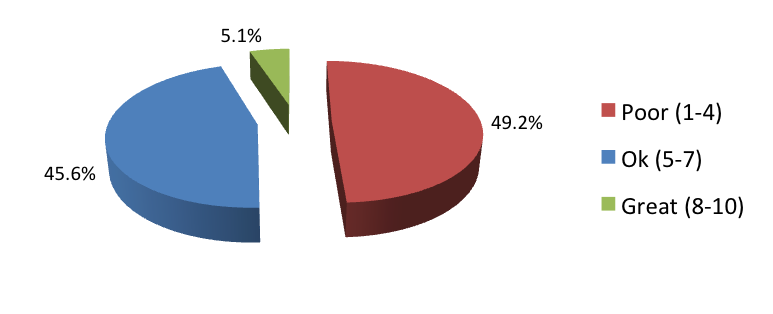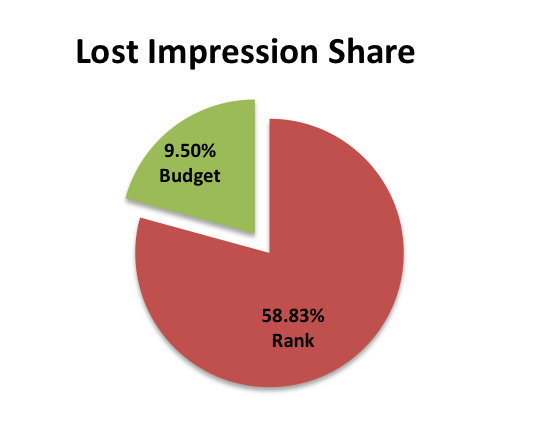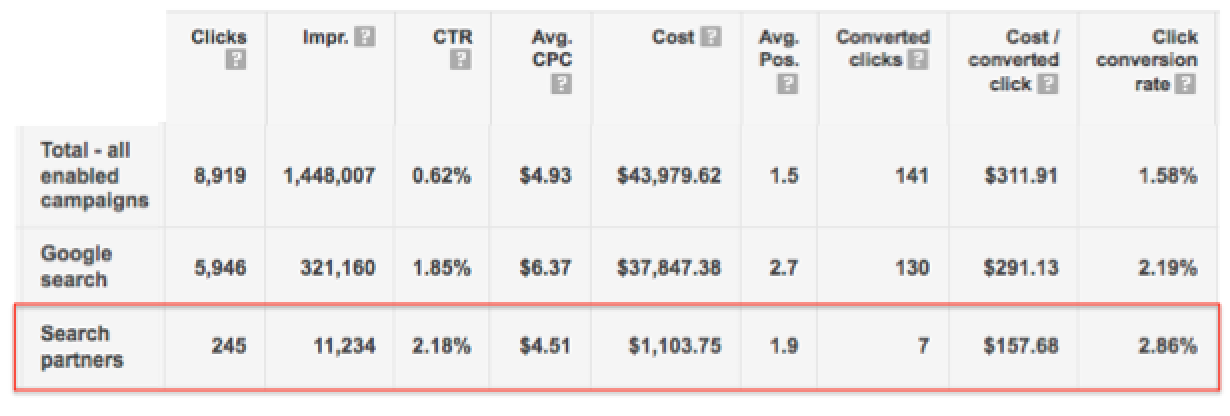Sometimes in the weeds of your own PPC account, it’s hard to see what’s really going on. Regularly auditing your account can help prevent you from slowly bleeding money or missing out on opportunities for growth or new features. However, regular audits can be hard to do when you are the only one in your account day in and day out.
As a Sr. Digital Specialist I spend about half of my time auditing potential client and existing client accounts across almost every vertical under the sun. The process can be time consuming with the various layers and complexity involved in PPC accounts. Below are 7 areas to focus on where there can be the most opportunity to identify gaps in a PPC program and help create a blueprint for success.
1. Quality Score
The ever-mysterious AdWords quality score. While this metric isn’t the end-all-be-all for analyzing an account, it is a great way to get a 3,000-foot view for how an account is performing. Advertisers that provide a good user experience according to Google, will typically get rewarded with a higher quality score (1-10). The higher the quality score, the more likely advertisers will outrank their competition while paying less.
So what is a great quality score? It’s very rare you will ever see an account that has a 10 quality score throughout, unless it’s strictly a brand campaign only bidding in exact match. We consider a great account quality score between 8-10, 5-7 to be ok and anything below 5 to be poor. From our experience accounts that fall within the 7 to 9 range to be good and have a structure that has the most balance of efficiency and growth.
2. Impression Share
Impression share is a competitive metric that allows you to see where an advertiser is missing out on share of voice or percentage of search engine traffic for campaigns, ad groups, keywords and products/product categories. Lost search impression share can be due to rank or budget. Budget is typically an easy fix if you have the additional funds, however, lost impression share due to rank can be a little more complex. Quality score is a part of the equation for determining rank, which is why we feel it is an important metric. Increasing quality score should in turn help improve lost impression share due to rank.
What is a good impression share? For search, anything above 75% would be considered good. Display impression share is much lower and can range anywhere between <1-10%.
3. Account Structure
The review of an account structure covers several pieces, including:
- Keywords
- Match types
- Keywords and ads per ad group
Typically, you will find the biggest impact of account structure has to do with match types. If your account is solely running broad match, stop right now and add exact match terms! 9 out of 10 times exact match terms will have a lower CPC, lower CPA and higher CVRs. We typically like to see accounts have 60-70% of volume from exact match with 30-40% through broad match modified and phrase.
We’ve found that having ad groups with no more than 15-20 keywords allow for tighter themes, resulting in higher quality scores. In addition, having 2-4 ads per ad group also allows for ongoing ad testing to help improve click thru rates.
The last piece of the account structure puzzle is reviewing the account for match type cannibalization. Match type cannibalization is when search queries populate across many different keywords. This can be a problem because you may not be showing users the most relevant ad to what they are searching for. If we find there is heavy match type cannibalization going on in the account, we may suggest segmenting ad groups or campaigns by match type which will allow you to funnel users to specific keywords using embedded negatives. Embedded negatives are match type specific negatives that help funnel traffic to the more relevant and efficient keywords.
For example, in an adgroup or campaign using just broad match, you would then use exact and phrase match versions of the keywords as negatives. This allows you to capture additional queries through broad match, while funneling traffic to the more efficient and relevant match types. i.e. exact.
4. Keywords
Depending on the size of the account, auditing keywords can be time consuming so a few areas we like to focus on are search query analysis, keyword duplication review, and negatives.
Reviewing search queries regularly for terms that are spending and not converting, or for generating new keyword ideas should be a regular optimization effort.
In addition, you should review negative keywords on a regular basis to ensure that you don’t have terms in your account that could be blocking relevant traffic. Using a broad match negative could potentially block wanted traffic so refrain from using this match type – stick with exact and phrase match negatives to be safe.
5. Display
With almost endless opportunities for layering and targeting Display campaigns, auditing these efforts are key. While there can be a lot of opportunity to increase traffic, it may or may not be the traffic you are looking for. One key area to start when reviewing Display campaigns is placements.
Take a minute to review Display placements over at least a 30 day period to see where your ads are showing up on the Google Display Network and how users are interacting. Here you will be able to see if you need to exclude placements that are bleeding money, or loosening targeting to gain more volume to your campaign. Display campaigns are great for branding and helping fill the funnel through the vast Display networks, however, they take more time to optimize to ensure you are not wasting money on unprofitable sites.
6. Ad Extensions
AdWords and Bing both offer ad extensions, which provide more real estate on the SERPS for text ads that show in premium position (1-3). AdWords also now includes ad extensions as part of determining quality score. Regularly auditing ad extensions is key to ensure your account is getting maximum coverage on all extensions available, including:
- Sitelinks
- Extended Sitelinks
- Callouts
- Review
- Call
7. Segments
Segmenting an account/campaign by device and network with Search Partners allows you to peel back a layer of your campaigns that you may not realize are performing well, or not so much. Once you have this information you can come up with a specific strategy to improve performance, whether that be through device bid modifier adjustments, creating mobile ads and landings pages or opting in or out of Search Partners.
*Bonus Tip – Market Expansion
Once you’ve identified areas for improvement within your existing accounts, it’s always important to keep your eyes open for new opportunities for market expansion. The PPC digital space is always evolving with new platforms so it’s important to understand what’s available and how to advertise in each space. This can be tough because some of the newer platforms may not have as many help options available but without risk, there is no reward.
Conclusion
While there are still about 100 other ways you can slice and dice your account to audit performance, the 7 areas above are a great starting point to identify if your account could use some extra attention. Plus, don’t forget to look beyond Google and Bing. There are many other PPC alternatives out there just waiting for you to test the waters and start raking in the dough.
What tips have you found helpful for auditing your accounts?








